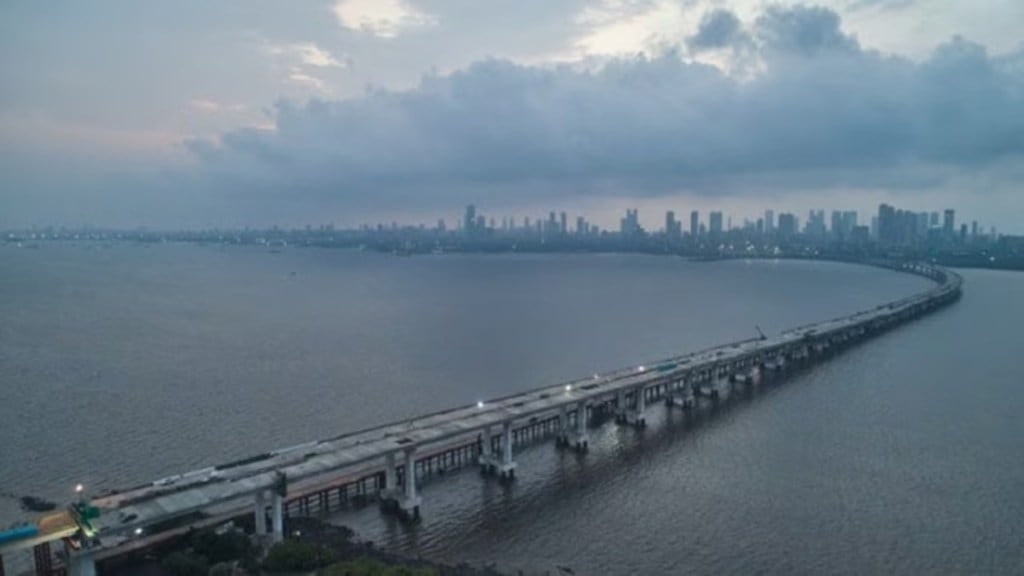Mumbai’s Trans Harbour Link (MTHL), the city’s newest and longest sea bridge, has been making waves (quite literally) since its inauguration on January 12th. In just 10 days, it has seen an average of nearly 30,000 vehicles zipping across its 21.8 km stretch, generating a daily revenue of Rs 61.50 lakh through tolls, a report by The Indian Express said. On the very first day, an impressive 28,176 vehicles used the bridge, bringing in a cool Rs 54.77 lakh in tolls. The next day saw an even bigger surge, with 54,977 vehicles crossing over and contributing Rs 1.06 crore to the coffers.
These figures, provided by the Mumbai Metropolitan Region Development Authority (MMRDA), the project’s developer, tell a clear story: Mumbaiites are embracing the MTHL with open arms (and wheels). The bridge, which connects Sewri in Mumbai to Chirle in Navi Mumbai, is not just a marvel of engineering but also a crucial link in the city’s transportation network.
MTHL Toll Talk:
Using the MTHL comes at a price, of course. Here’s a quick breakdown of the toll charges:
Sewri to Chirle: Rs 250 (one way), Rs 300 (return), Rs 500 (daily pass), Rs 10,000 (monthly pass)
Sewri to Shivaji Nagar (Ulwe): Rs 200 (one way), Rs 250 (return)
Shivaji Nagar-Gavhan: Rs 50 (one way), Rs 75 (return)
While the MTHL promises a swifter commute, it’s important to keep the pedal in check. The speed limit is set at 100 kmph on the bridge itself, and a more cautious 40 kmph on the ramps leading up to it. The Mumbai police handle traffic on the first 10.4 km stretch from Sewri, while the Navi Mumbai police take over on the rest of the bridge.
A Bridge to the Future:
The MTHL is more than just a concrete behemoth spanning the Arabian Sea. It’s a symbol of Mumbai’s ambition, a testament to its engineering prowess, and a promise of a more connected and efficient future. With its sleek design, cutting-edge technology, and the sheer number of vehicles it’s attracting, the MTHL is sure to become a landmark in the city’s landscape, both literally and figuratively.


